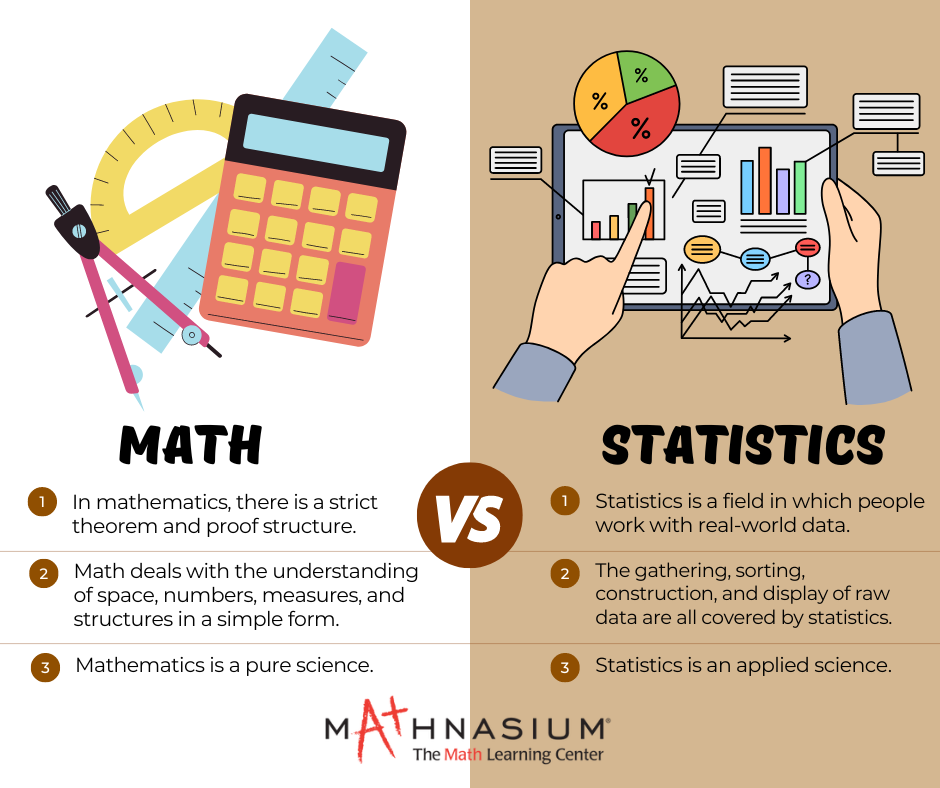Rocky River
21818 Center Ridge Rd
Rocky River, OH 44116

Statistics is often viewed as a subset of Math, merged with other topics. While the leading Mathematicians think of Statistics as no more than a part of Applied Mathematics, many think otherwise. Both subjects are complementary and use similar methodologies. To understand statistical techniques better, it is helpful to have a strong grasp of math. In this blog, we will explore the concept of Math vs Statistics and know the difference between both.
What exactly is Mathematics?
Mathematics is known as the science and study of quality, structure, numbers, space, and change. It looks for patterns, creates new data, and shows the truth with accurate answers from well-chosen assumptions and definitions. There are numerous branches of math in science connected to numbers, such as geometric shapes, algebra, and others.
What exactly is Statistics?
Statistics is a specialized study relating to the interpretation, collection, translation, and analysis of data. Differential and integral calculus, linear algebra, and probability theory are used in statistics’ mathematical ideas. There are two types of Statistics: Descriptive and Inferential. As the name suggests, the former helps in the description and presentation of data. The latter is used to extract information and make predictions about it.
Key Differences Between Mathematics and Statistics
Measurement, context, and variability differ between mathematics and statistics. Despite their differences, these interrelated subjects are extremely crucial in the modern world. Math is essential in academic structure, but Statistics is highly relevant in our everyday lives and in our employment prospects. In particular, with the rise of a data-driven lifestyle.
